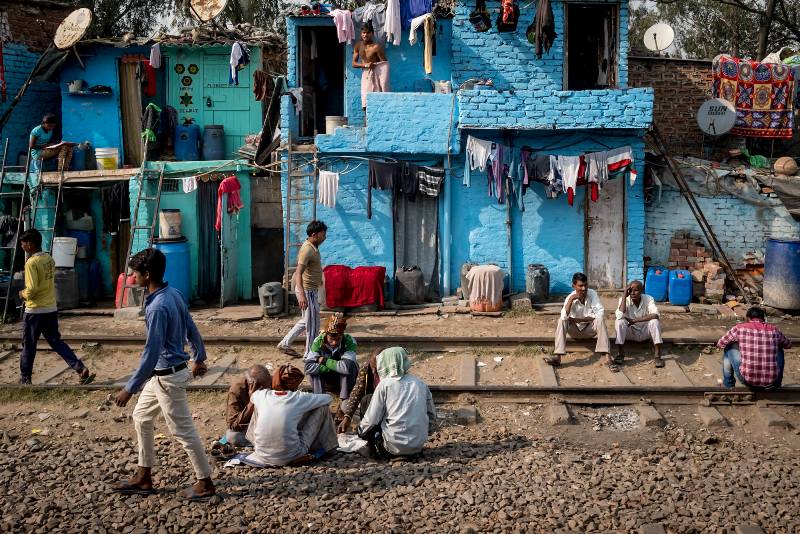Every day I take an autorickshaw from Green Park to Vasant Kunj. The autorickshawalla steers us through the streets of South Delhi, mostly safely (don‘t jinx it!) and mostly without problems (“250 rupees, bhai? Meerut tak nahi jana chahta hoon!“). However, every day this gives me the chance and the privilege to observe the people we pass by on the streets of Delhi: the sabziwalla, the dhabawalla, the young boy that cleans the tables and brings water to the (mostly) male guests, the car repair stand, the sweepers and the workers that clean behind a group of men, leaning on their motorbikes, loudly chatting and joking around the students on their way to school or college and last-but-definitely-not-least, the well-suited manager sitting at the back of his fancy car, steered by a chauffeur.


What can we observe here? Well, I think nothing less than the patriarchal structure and power relations of Indian society. For the gendered divide between private and public sphere, I would argue, is nowhere as obvious and clear as on the streets of North India, even though, thankfully, it is contested by millions of women every day. When we (the rickshawalla & I) drive through the streets, I see mostly men. Different masculinities on the street, on bikes, in the cars…waiting, working, eating or time passing.
Since Raewyn Connells “Masculinities”, we know that there isn’t just one type of masculinity but many, of whom a hegemonic masculinity is the culturally dominant that is taking the pole position of privilege while subordinating the others. I would argue that every community or group has its internal hierarchical structure of gendered relations and images of masculinity. Therefore, the street is one of the arenas in India where hierarchies within masculinities are negotiated and – peacefully or violently – clash. The street is the display of privileges, of social and gendered relations that lie on the cross-cutting of caste, religion, caste or age.


But talking about masculinities seems to remain in the background of gender studies. But how can we change the patriarchal society, I am asking myself, if we don’t explore the identity constructions that control it?
Dear readers, join me in April in my research on masculinities. Let’s go on an intersectional field trip to understand a bit more about men in India and their role within society. Let’s explore the relation between the hegemonic and subordinated, marginalized masculinities. We need to talk about cross-cutting issues, like Age, Class, Religion, Caste and Sexuality and their influence on masculinity constructions. We need to talk about privileges and pressure, hierarchies and social inequalities, about social change and neo-traditional discourses on safety and honour which try to limit people’s access to the public space and repress gender identities and sexual rights throughout society.
In short, I invite you to explore together what makes a man a man in India.
About the Author


Erik is a graduate student from Berlin, and has engaged in research on masculinity, gender and the urban. He is currently living in Delhi and calls himself a Bombaywala at heart.




